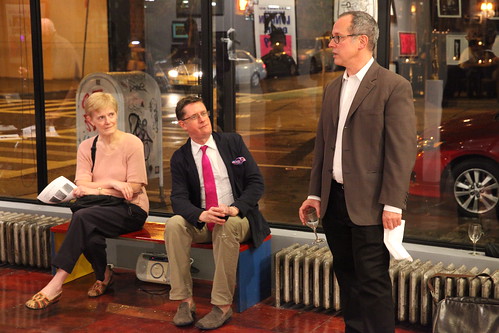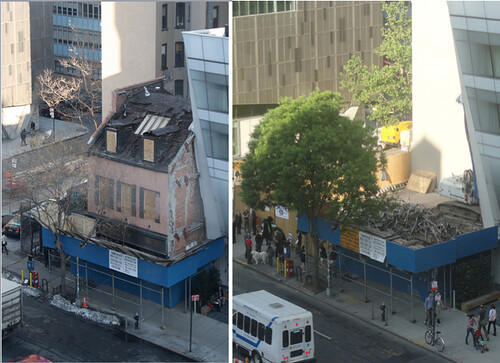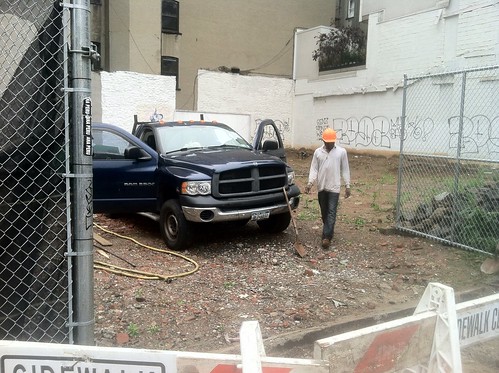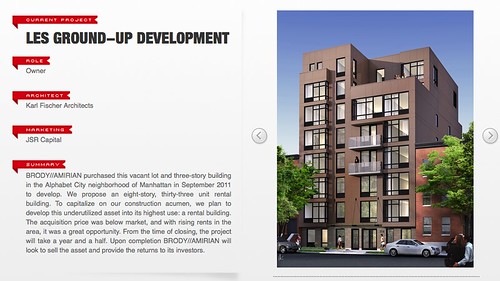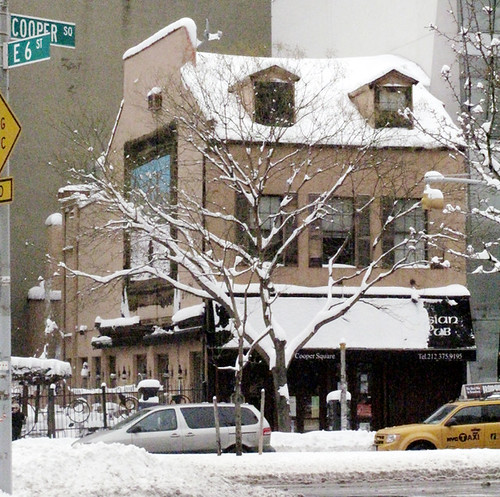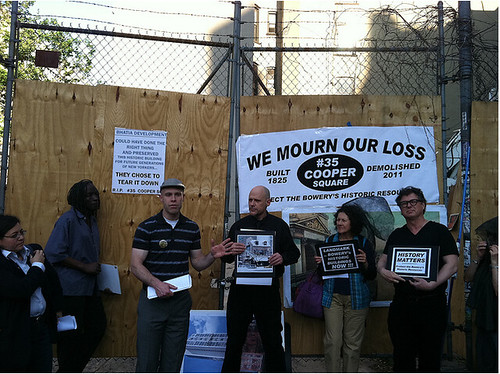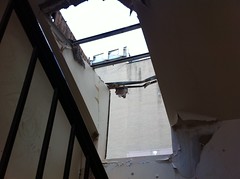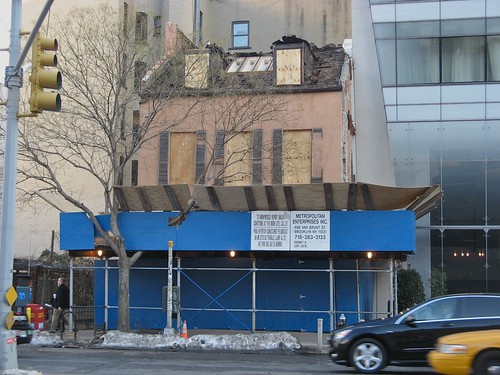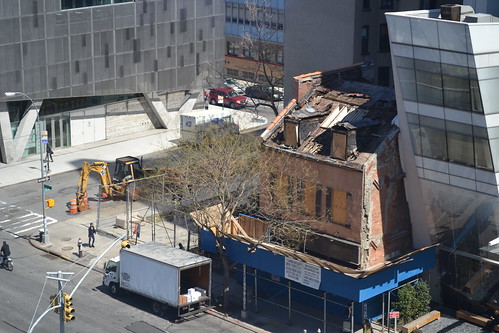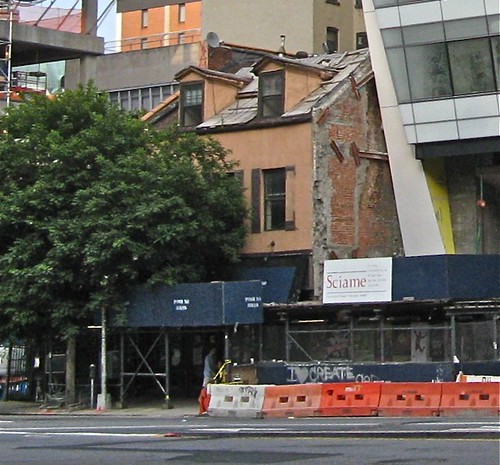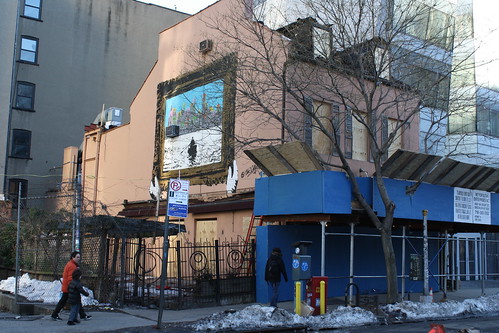 Claire Glass Scaffolding began to rise around 35 Cooper Square last month.
Claire Glass Scaffolding began to rise around 35 Cooper Square last month.Comments have continued to stream into The Local about an opinion piece by NYU Journalism’s Greg Howard that questioned the value of preserving 35 Cooper Square.
A sampling of reactions from the weekend.
One reader, “archietexture,” wrote:
“Residents recognize that new development of dorms, luxury hotels and condos does not benefit them. But being made a symbol doesn’t mean that 35 Cooper is not historically significant. Its loss will be a tragedy, and a travesty of the Landmarks process.”
Defending the preservation of the building, “Eastvillagearts” said:
“I’m certainly not arguing for places to be frozen in time – that would be counter to the compelling power of NYC’s continuing relevance. But there are places that have been particularly important to communities that need to be preserved. There are people and organizations and businesses that helped make neighborhoods what they are today who should be helped to stay. And the truth is that continued diversity and eclecticism is part of what continues to attract new residents, visitors and investment. The irony is that the market is attracted to precisely what it tends to destroy – authenticity.”
Elliott Hurwitt considered the legacy of unchecked development:
“But the developers will leave behind an immeasurably impoverished urban environment, one with no cultural resonance whatever, regardless of what you say about the East Village harboring the next di Prima, Hendrix or Madonna. The first of these 3 could never find a haven there now, affordable urban space in NYC is OVER, so there will be no further undergrounds, no beatniks, etc., that ended a long time ago.”
“Carol from East 5th Street” said the restaurant that occupied site in recent years transcended being just a watering hole for students:
“It was much, much more to me, my family, friends and neighbors. For most Sundays since the restaurant reopened as Cooper 35 Asian Pub and for the years before when it was Dolphins, it was where we had Sunday dinner. It was where we had gatherings of family and friends for just about every important event such as birthdays, graduations, milestones in our lives.”
Another reader, J.T., offered support for Mr. Howard:
“I think this is a good editorial piece. You spoke your opinion and caused great hype, mostly negative. But I believe that is just an older generation who is not ready for change. They are mad at Generation Y who are experiencing this vast change in lifestyle from the previous generations, where history in not of great importance. Generation Y likes and has experienced much change, which the older generations just aren’t as apt about. Everyone has an opinion.”
Another reader, “Mose,” recalled the building’s history:
“these buildings are cultural treasures literally, physical manifestations of 350 years of stories set in the most remarkable place humans have ever co-existed. men and women walked through the door of 35 cooper who were on the bowery only a generation earlier and watched as washington rode by. i feel fortunate to live in a place where i get to walk past these time capsules daily, history becomes tactile and experiential. ”



